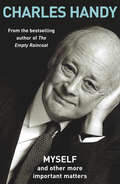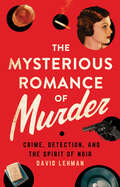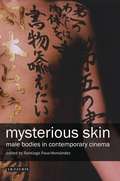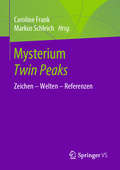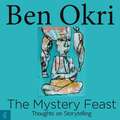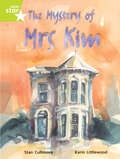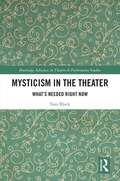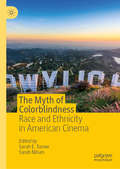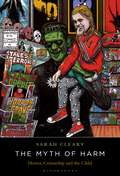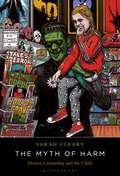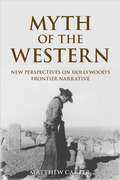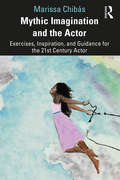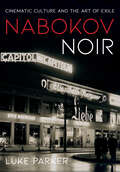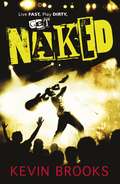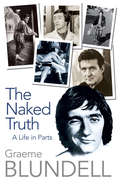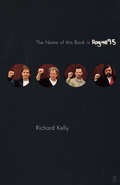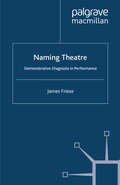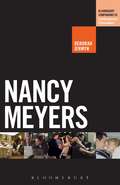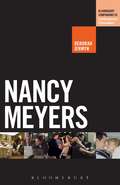- Table View
- List View
Myself and Other More Important Matters
by Charles HandyCharles Handy is perhaps best known outside the business world as a wise and warm presenter of Radio 4's 'Thought for the Day'. Long recognised as one of the world's leading business thinkers (over a million copies of his books have been sold around the world), in Myself and Other More Important Matters he leaves the management territory he has so effectively and influentially mapped in the past to explore the wider issues and dilemmas - both moral and creative - raised by the turning points of his long and successful life.Here he investigates the big issues of how life can best be lived as they have emerged from the unfolding of his life and his unique and influential understanding of what really matters.From supplying oil by boat to an area larger than England as a bullish young Shell executive in Borneo to realising that there was a big difference between describing the development of a 'portfolio' life (made up of a variety of activities for a range of purposes and pay) in theory and actually himself leaving behind full-time employment, from helping to start up the London and Open business schools to listening and talking to people all over the world about how they want to manage their lives, Handy's telling of his experiences proves both revealing and significant.
The Mysterious Romance of Murder: Crime, Detection, and the Spirit of Noir
by David LehmanFrom Sherlock Holmes to Sam Spade; Nick and Nora Charles to Nero Wolfe and Archie Goodwin; Harry Lime to Gilda, Madeleine Elster, and other femmes fatales—crime and crime solving in fiction and film captivate us. Why do we keep returning to Agatha Christie's ingenious puzzles and Raymond Chandler's hard-boiled murder mysteries? What do spy thrillers teach us, and what accounts for the renewed popularity of morally ambiguous noirs? In The Mysterious Romance of Murder, the poet and critic David Lehman explores a wide variety of outstanding books and movies—some famous (The Maltese Falcon, Double Indemnity), some known mainly to aficionados—with style, wit, and passion.Lehman revisits the smoke-filled jazz clubs from the classic noir films of the 1940s, the iconic set pieces that defined Hitchcock's America, the interwar intrigue of Eric Ambler's best fictions, and the intensity of attraction between Humphrey Bogart and Lauren Bacall, Robert Mitchum and Jane Greer, Cary Grant and Ingrid Bergman. He also considers the evocative elements of noir—cigarettes, cocktails, wisecracks, and jazz standards—and offers five original noir poems (including a pantoum inspired by the 1944 film Laura) and ironic astrological profiles of Barbara Stanwyck, Marlene Dietrich, and Graham Greene. Written by a connoisseur with an uncanny feel for the language and mood of mystery, espionage, and noir, The Mysterious Romance of Murder will delight fans of the genre and newcomers alike.
Mysterious Skin: The Male Body in Contemporary Cinema
by Santiago Fouz-HernandezBorrowing its title from Gregg Araki's 2005 film, in which the camera's contemplation of the male body encourages us to feel that body, and covering a broad span of subjects and films, 'Mysterious' Skin offers a wider, more representative picture of the depiction of the male body in contemporary world cinemas than has hitherto been attempted. An international array of major experts explore the treatment of masculinity and the male body in the cinemas of Africa, Australia, China, France, Germany, Great Britain, India, North America, Spain, Taiwan and Vietnam, as well as Hollywood. Their common concern is to reveal how the representation of the male body is used in films to convey a country's anxieties about its national identity and history, as well as how it engages with questions of racial, sexual or gender politics. They discuss key actors, directors and films of these countries, from Ewan MacGregor in Peter Greenaway's 'The Pillow Book', through the films of Wong Kar Wai, to Paul Hogan as Mick Dundee in 'Crocodile Dundee'. In so doing, 'Mysterious Skin' also provides a strong overview of important cinema produced around the world in the last twenty years.
Mysterium Twin Peaks: Zeichen – Welten – Referenzen
by Caroline Frank Markus SchleichDer Sammelband bringt verschiedene Zugänge und Kontexte zu Twin Peaks zusammen und greift dabei auch die besonderen produktions- und rezeptionsästhetischen Spezifika der Serie auf. Das Spektrum der Beiträge umfasst ganz unterschiedliche Themenbereiche: Genremix, Transaktualität, komplexe narrative Strukturen, Traum und Traumhaftigkeit, Geschlechts- und Identitätskonzepte, extremer Fankult, visuelle Ästhetik, akustische Dimensionen, postmoderne Verweiskultur und nicht zuletzt die Frage danach, welche anderen Quality TV-Serien durch Twin Peaks erst möglich wurden.
The Mystery Feast: Thoughts on Storytelling
by Ben Okri‘In every moment, we are part of the infinite stories that the universe is telling us and that we are telling the universe.’Packed with ideas and inspiration, The Mystery Feast offers numerous pathways into the magical world of storytelling. Beginning with a poem, ‘All we do’, Booker prize-winning novelist Ben Okri presents his considered thoughts on the purpose and meaning of stories, concluding with a series of condensed ‘Notes to the modern storyteller’. The collection is completed with a ‘stoku’ – a brief tale on the theme.Based on decades of honing his art, this stimulating booklet gives a glimpse into the mind of a master of contemporary storytelling.
The Mystery Of Mrs Kim (PDF)
by Stan CullimoreCharlotte and Naomi are frightened of Mrs Kim. She looks strange and scary, so they run past her on their way to school without saying hello. But when they find out the truth about Mrs Kim, they are sorry for being so rude. Illustrated by Karin Littlewood
Mysticism in the Theater: What’s Needed Right Now (Routledge Advances in Theatre & Performance Studies)
by Tom BlockMysticism in the Theater introduces theater makers to the power and possibility of using historical mystical ideas to influence all aspects of a production. Historical mysticism represents ideas developed by recognized spiritual thinkers in all religions and time periods: individuals who stilled their ego, and perceived the unity of all, hidden within the apparent multiplicity of existence. This unique manner of spiritual inlay allows theatrical presentations to find the height of artistic expression: art at the intersection of our historical moment and the eternal. This study introduces theater makers to the history of mystical inspiration within performance work and develops strategies for inserting mystical ideas into their productions. The book ties this model into theatre’s history, as mystical ideas and quotes have been inserted into productions from Greek theatre through Shakespeare and into the present day. This book explores how teachings and ideas of specific historical mystical thinkers might influence all aspects of contemporary theatrical productions including writing, directing, acting, stagecraft/set design, lighting design, costume design, sound design, and choreography.
Mysticism in the Theater: What’s Needed Right Now (Routledge Advances in Theatre & Performance Studies)
by Tom BlockMysticism in the Theater introduces theater makers to the power and possibility of using historical mystical ideas to influence all aspects of a production. Historical mysticism represents ideas developed by recognized spiritual thinkers in all religions and time periods: individuals who stilled their ego, and perceived the unity of all, hidden within the apparent multiplicity of existence. This unique manner of spiritual inlay allows theatrical presentations to find the height of artistic expression: art at the intersection of our historical moment and the eternal. This study introduces theater makers to the history of mystical inspiration within performance work and develops strategies for inserting mystical ideas into their productions. The book ties this model into theatre’s history, as mystical ideas and quotes have been inserted into productions from Greek theatre through Shakespeare and into the present day. This book explores how teachings and ideas of specific historical mystical thinkers might influence all aspects of contemporary theatrical productions including writing, directing, acting, stagecraft/set design, lighting design, costume design, sound design, and choreography.
The Myth of Colorblindness: Race and Ethnicity in American Cinema
by Sarah E. Turner Sarah NilsenThis book explores representations of race and ethnicity in contemporary cinema and the ways in which these depictions all too often promulgate an important racial ideology: the myth of colorblindness. Colorblindness is a discursive framework employed by mainstream, neoliberal media to celebrate a multicultural society while simultaneously disregarding its systemic and institutionalized racism. This collection is unique in its examination of such films as Ex Machina, The Lone Ranger, The Blind Side, Zootopia, The Fast and the Furious franchise, and Dope, which celebrate the myth of colorblindness, yet perpetuate and entrench the racism and racial inequities that persist in contemporary society. While the #OscarsSoWhite movement has been essential to bringing about structural changes to media industries and offers the opportunity for a wide diversity of voices to alter and transform the dominant, colorblind narratives continue to proliferate. As this book demonstrates, Hollywood still has a long way to go.
The Myth of Harm: Horror, Censorship and the Child
by Sarah ClearyThe horror genre has endured a long and controversial success within popular culture. Fraught with accusations pertaining to its alleged ability to harm and corrupt young people and indeed society as a whole, the genre is constantly under pressure to suppress that which has made it so popular to begin with - its ability to frighten and generate discussion about society's darker side. Recognising the circularity of patterns in each generational manifestation of horror censorship, The Myth of Harm draws upon cases such as the Slenderman stabbing and the James Bulger murder amongst many others in order to explore the manner in which horror has been repeatedly cast as a harmful influence upon children at the expense of scrutinising other more complex social issues.Focusing on five major controversies beginning in the 1930's Golden Age of Horror Cinema and ending on a more contemporary note with Cyber-Gothic horror – this book identifies and considers the various myths and false hoods surrounding the genre of horror and question the very motivation behind the proliferation and dissemination of these myths as scapegoats for political and social issues, platforms for “moral entrepreneurs” and tools of hyperbolae for the news industry.
The Myth of Harm: Horror, Censorship and the Child
by Sarah ClearyThe horror genre has endured a long and controversial success within popular culture. Fraught with accusations pertaining to its alleged ability to harm and corrupt young people and indeed society as a whole, the genre is constantly under pressure to suppress that which has made it so popular to begin with - its ability to frighten and generate discussion about society's darker side. Recognising the circularity of patterns in each generational manifestation of horror censorship, The Myth of Harm draws upon cases such as the Slenderman stabbing and the James Bulger murder amongst many others in order to explore the manner in which horror has been repeatedly cast as a harmful influence upon children at the expense of scrutinising other more complex social issues.Focusing on five major controversies beginning in the 1930's Golden Age of Horror Cinema and ending on a more contemporary note with Cyber-Gothic horror – this book identifies and considers the various myths and false hoods surrounding the genre of horror and question the very motivation behind the proliferation and dissemination of these myths as scapegoats for political and social issues, platforms for “moral entrepreneurs” and tools of hyperbolae for the news industry.
Myth of the Western
by Matthew CarterMyth of the Western re-invigorates the debate surrounding the relationship between the Western and frontier mythology, arguing for the importance of the genre’s socio-cultural, historical and political dimensions.
Mythic Imagination and the Actor: Exercises, Inspiration, and Guidance for the 21st Century Actor
by Marissa ChibásIn Mythic Imagination and the Actor, Marissa Chibás draws on over three decades of experience as a Latinx actor, writer, filmmaker, and teacher to offer an approach to acting that embraces collective imagination, archetypal work, and the mythic. The book begins with a comparative analysis between method acting and mythic acting, encouraging actors to push past the limits of singular life experience and move to a realm where imagination and metaphor thrive. In the context of mythic acting, the book explores awareness work, solo performance creation, the power of archetypes, character building exercises, creating a body/text connection, and how to be the detective of your own process. Through this inclusive guide for a new age of diverse performers traversing gender, ability, culture, and race, readers are able to move beyond their limits to a deep engagement with the infinite possibilities of rich imagination. The final chapter empowers and motivates artists to live healthfully within the practice and create a personal artistic vision plan.Written for actors and students of acting, American Drama, and film and theatre studies, Mythic Imagination and the Actor provides practical exercises and prompts to unlock and interpret an actor’s deepest creative sources.
Mythic Imagination and the Actor: Exercises, Inspiration, and Guidance for the 21st Century Actor
by Marissa ChibásIn Mythic Imagination and the Actor, Marissa Chibás draws on over three decades of experience as a Latinx actor, writer, filmmaker, and teacher to offer an approach to acting that embraces collective imagination, archetypal work, and the mythic. The book begins with a comparative analysis between method acting and mythic acting, encouraging actors to push past the limits of singular life experience and move to a realm where imagination and metaphor thrive. In the context of mythic acting, the book explores awareness work, solo performance creation, the power of archetypes, character building exercises, creating a body/text connection, and how to be the detective of your own process. Through this inclusive guide for a new age of diverse performers traversing gender, ability, culture, and race, readers are able to move beyond their limits to a deep engagement with the infinite possibilities of rich imagination. The final chapter empowers and motivates artists to live healthfully within the practice and create a personal artistic vision plan.Written for actors and students of acting, American Drama, and film and theatre studies, Mythic Imagination and the Actor provides practical exercises and prompts to unlock and interpret an actor’s deepest creative sources.
Nabokov Noir: Cinematic Culture and the Art of Exile
by Luke ParkerNabokov Noir places Vladimir Nabokov's early literary career—from the 1920s to the 1940s—in the context of his fascination with silent and early sound cinema and the chiaroscuro darkness and artificial brightness of the Weimar era, with its movie palaces, cultural Americanism, and surface culture. Luke Parker argues that Nabokov's engagement with the cinema and the dynamics of mass culture more broadly is an art of exile, understood both as literary poetics and practical strategy.Obsessive and competitive, fascinated and disturbed, Nabokov's Russian-language fiction and essays, written in Berlin, present a compelling rethinking of modernist-era literature's relationship to an unabashedly mass cultural phenomenon. Parker examines how Nabokov's involvement with the cinema as actor, screenwriter, moviegoer, and, above all, chronicler of the cinematized culture of interwar Europe enabled him to flourish as a transnational writer. Nabokov, Parker shows, worked tirelessly to court publishers and film producers for maximum exposure for his fiction across languages, media, and markets. In revealing the story of Nabokov's cinema praxis—his strategic instrumentalization of the movie industry—Nabokov Noir reconstructs the deft response of a modern master to the artificial isolation and shrinking audiences of exile.
Naked (Fiction - Young Adult Ser.)
by Kevin BrooksLondon, 1976: a summer of chaos, punk, love . . . and the boy they called Billy the Kid.It was the summer of so many things. Heat and violence, love and hate, heaven and hell. It was the time I met William Bonney - the boy from Belfast known as Billy the Kid. I've kept William's secrets for a long time, but now things have changed and I have to tell the truth. But I can't begin until I've told you about Curtis Ray. Hip, cool, rebellious Curtis Ray. Without Curtis, there wouldn't be a story to tell. It's the story of our band, of life and death . . . and everything in between.This characteristically gripping novel from award-winning author Kevin Brooks will rock you to the core.
Naked: On Sex, Work, and Other Burlesques
by Fancy FeastIn Naked, a celebrated burlesque performer, sex educator, and social worker bares it all, with incisive and hilarious essays about selling, performing, and consuming desire. Fancy Feast draws back the curtain to reveal a world that most denizens of the daytime never see. Part exclusive backstage pass, part long-form literary striptease, these essays confront our culture&’s tightly held beliefs—like so many clutched pearls—about sex, communication, power, and the messiness of life on the margins of respectability. In &“Dildo Lady,&” Fancy recounts her time compensating for the failures of the American sex education system while working retail at a sex toy store. In &“Doing Yourself,&” Fancy tackles fatphobia and dating, self-love, and fantasies. In &“Yes/No/Maybe,&” Fancy brings the reader from sex parties to polyamorous relationships as she contrasts the undeniable sexiness of enthusiastic consent with the devastating effects of miscommunication and entitlement. Fancy Feast does this all as a fat woman who makes a living taking off her clothes—a triumphant punch-back at a culture that wants fat people to be self-hating or sexless. For fans of Lindy West and Melissa Febos, Naked is by turns splashy, vulnerable, and always powerful.
Naked
by David SedarisA collection of personal essays - surprising, disarming, heartbreakingly funny - from the #1 bestselling writer Time named America's Favorite Humorist.A riotous collection of memoirs which explores the absurd hilarity of modern life and creates a wickedly incisive portrait of an all-too-familiar world. It takes Sedaris from his humiliating bout with obsessive behaviour in 'A Plague of Tics' to the title story, where he is finally forced to face his naked self in the company of lunatics. At this soulful and moving moment, he brushes cigarette ashes from his pubic hair and wonders what it all means.This remarkable journey into his own life follows a path of self-effacement and a lifelong search for identity leaving himself both under suspicion and over dressed.
Naked Cinema: Working with Actors
by Sally PotterSally Potter has been renowned for her rapport with actors, and for the luminous performances she works with them to produce. Now she strips bare the art and craft of directing actors for the camera, from casting a film to the moment of first screening when the work goes public. A brilliant writer for the screen, here Potter shows herself to be expert at translating the experience of film directing to the page. She addresses us in prose that is both unsentimental and inspired, tracing the energies that pass between actor, director and audience; shaping for the reader the acts of transmission and imagination, performance and witness, the sum of which make up a film.In addition to the core text, the book contains interviews with actors with whom Sally Potter has worked, whose voices will counterpoint Sally Potter's, and will inform and illuminate the reader's sense of her work. Those interviewed include: Julie Christie, Johnny Depp, Jude Law, Judi Dench, Simon Abkarian, Annette Benning, Timothy Spall, Steve Buscemi, Riz Ahmed, Elle Fanning, Alessandro Nivola, and Lily Cole.
Naked Justice (Oberon Modern Plays Ser.)
by John MortimerThree strange people, two men and a woman, arrive in a house where they are obviously expected. Who are they? They talk about crime. Are they criminals? The woman talks a lot about sex, what dubious business is she in? A play about the act of judging: can it be separated from the character and past of who sits in judgement? Naked Justice toured the UK in 2001.
The Naked Truth: A life in parts
by Graeme BlundellTHE NAKED TRUTH is Graeme Blundell's personal insight into the early years of truly indepedent local theatre, the wild film industry of the seventies, the controversial rise of Australian television, and his role in each of them.
The Name of this Book is Dogme95
by Richard T. KellyA spectre is haunting world cinema - the spectre of a Danish 'new wave' led by mercurial director Lars Von Trier. In 1995, when Von Trier and three comrades issued a 10-point 'Vow of Chastity' for the making of simpler, more truthful movies, cynics in the film business refused to take it seriously. Five years on, the international success of the raw, uncompromising 'Dogme95' films - Festen, The Idiots, Mifune, The King is Alive - has fired a volley of shots across the bows of a staid and bloated industry. Richard Kelly's investigation of the Dogme95 movement is a piece of 'gonzo journalism' in which Kelly sallies forth in search of the Dogme brothers and their accomplices, seeking to hammer out the truth from the lies in this austere and anarchic piece of cinematic mischief.
Naming Theatre: Demonstrative Diagnosis in Performance (Performance Interventions)
by J. FriezeReading a range of work from the US and UK over the last two decades, this is an innovative study of theatre's growing obsession with technologies and effects of naming. How does theatre reflect, and intervene in, naming practices across domains such as philosophy, computing, journalism, anthropology, advertising, military training, and genetics?
Nancy Meyers (The Bloomsbury Companions to Contemporary Filmmakers)
by Deborah JermynNancy Meyers is acknowledged as the most commercially successful woman filmmaker of all time, described by Daphne Merkin in The New York Times on the release of It's Complicated as "a singular figure in Hollywood – [she] may, in fact, be the most powerful female writer-director-producer currently working". Yet Meyers remains a director who, alongside being widely dismissed by critics, has been largely absent in scholarly accounts both of contemporary Hollywood cinema, and of feminism and film. Despite Meyers' impressive track record for turning a profit (including the biggest box-office return ever achieved by a woman filmmaker at that timefor What Women Want in 2000), and a multifaceted career as a writer/producer/director dating back to her co-writing Private Benjamin in 1980, Meyers has been oddly neglected by Film Studies to date. Including Nancy Meyers in the Bloomsbury Companions to Contemporary Filmmakers rectifies this omission, giving her the kind of detailed consideration and recognition she warrants and exploring how, notwithstanding the challenges authorship holds for feminist film studies, Meyers can be situated as a skilled 'auteur'. This book proposes that Meyers' box-office success, the consistency of style and theme across her films, and the breadth of her body of work as a writer/producer/director across more than three decades at the forefront of Hollywood, (thus importantly bridging the second/third waves of feminism) make her a key contemporary US filmmaker. Structured to meet the needs of both the student and scholar, Jermyn's volume situates Meyers within this historical and critical context, exploring the distinctive qualities of her body of work, the reasons behind the pervasive resistance to it and new ways of understanding her films.
Nancy Meyers (The Bloomsbury Companions to Contemporary Filmmakers)
by Deborah JermynNancy Meyers is acknowledged as the most commercially successful woman filmmaker of all time, described by Daphne Merkin in The New York Times on the release of It's Complicated as "a singular figure in Hollywood – [she] may, in fact, be the most powerful female writer-director-producer currently working". Yet Meyers remains a director who, alongside being widely dismissed by critics, has been largely absent in scholarly accounts both of contemporary Hollywood cinema, and of feminism and film. Despite Meyers' impressive track record for turning a profit (including the biggest box-office return ever achieved by a woman filmmaker at that timefor What Women Want in 2000), and a multifaceted career as a writer/producer/director dating back to her co-writing Private Benjamin in 1980, Meyers has been oddly neglected by Film Studies to date. Including Nancy Meyers in the Bloomsbury Companions to Contemporary Filmmakers rectifies this omission, giving her the kind of detailed consideration and recognition she warrants and exploring how, notwithstanding the challenges authorship holds for feminist film studies, Meyers can be situated as a skilled 'auteur'. This book proposes that Meyers' box-office success, the consistency of style and theme across her films, and the breadth of her body of work as a writer/producer/director across more than three decades at the forefront of Hollywood, (thus importantly bridging the second/third waves of feminism) make her a key contemporary US filmmaker. Structured to meet the needs of both the student and scholar, Jermyn's volume situates Meyers within this historical and critical context, exploring the distinctive qualities of her body of work, the reasons behind the pervasive resistance to it and new ways of understanding her films.
